Advanced electrode boilers dramatically reduce the risk of explosion, fire, and noxious emissions associated with fossil fuel burning units In industry, gas-fired boilers have largely been the standard for many decades to produce steam as well as heat process water. However, not all boilers are created equal in terms of safety. By definition, combustion-fueled boilers Read more
electric boilers
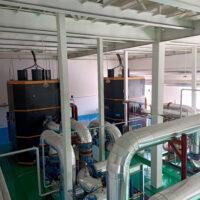
Advanced electrode boilers dramatically reduce the risk of explosion, fire, and noxious emissions associated with fossil fuel burning units
In industry, gas-fired boilers have largely been the standard for many decades to produce steam as well as heat process water. However, not all boilers are created equal in terms of safety. By definition, combustion-fueled boilers can emit harmful vapors, leak gas, and even cause explosions and fires.
In a recent example, a natural gas boiler was cited as the cause of a massive explosion and fire at a food processing plant in eastern Oregon that injured six and caused severe damage to the facility’s main building. Given the risks, many processors are turning to a new generation of electric boilers to dramatically reduce these hazards.
“With gas burning boilers, any gas leak can increase the risk of an explosion wherever there are fuel lines, fumes, flames, or storage tanks. So, gas units must be continually monitored or periodically inspected,” says Robert Presser, Vice President of Acme Engineering Products, who notes that state and municipal safety guidelines vary depending on boiler type and the expected frequency of inspection. Acme Engineering is a North American manufacturer of boilers for large industrial and commercial applications. The company is an ISO 9001:2015 certified manufacturer of environmental controls and systems with integrated mechanical, electrical and electronic capabilities.
In gas-fired boilers, explosions can result in the ignition and instantaneous combustion of highly flammable gas, vapor, or dust that has accumulated in a boiler. The force of the explosion is often much greater than the boiler combustion chamber can withstand.

As safer, more energy-efficient electrode boilers become more widely available, companies can protect their people and processes more completely while minimizing required maintenance.
Minor explosions, known as flarebacks or blowbacks, can also suddenly blow flames many feet from firing doors and observation ports, seriously burning anyone in the path of a flame.
Natural gas-fired boiler emissions also pose potential hazards in the form of emissions. This can include nitrogen oxides (NOx), carbon monoxide (CO), nitrous oxide (N2O), volatile organic compounds (VOCs), sulfur dioxide (SO2), and particulate matter (PM), as well as the greenhouse gasses carbon dioxide (CO2) and methane (CH4), which accelerate global warming.
In addition, fossil fuel burning boilers can also face potentially dangerous operational issues stemming from excessive heat accumulation, particularly if the water is too low in the system to properly absorb the heat. High heat conditions can compromise the boiler, electrodes, and other equipment essential to operation.
To dramatically improve operator and environmental safety, industry is turning toward modern electric boilers that eliminate many of these risks. The most advanced electrode boilers not only match the capacity of large gas or oil-fired boilers but are safer and more compact, maximizing energy efficiency, improving reliability, and minimizing maintenance.
Although many facility engineers are familiar with gas-fired boilers, many believe that electric boilers cannot match the output of the traditional, fossil fuel burning units. Due to considerable advances in electric boiler technology, however, such technology can now match the capacity of large gas or oil-fired boilers in a much smaller footprint.
Presser explains that electric boilers utilize the conductive and resistive properties of water to carry electric current and generate steam. An A.C. current flows from an electrode of one phase to ground using the water as a conductor. Since chemicals in the water provide conductivity, the current flow generates heat directly in the water itself. The more current (amps) that flows, the more heat (BTUs) is generated, and the more steam produced.
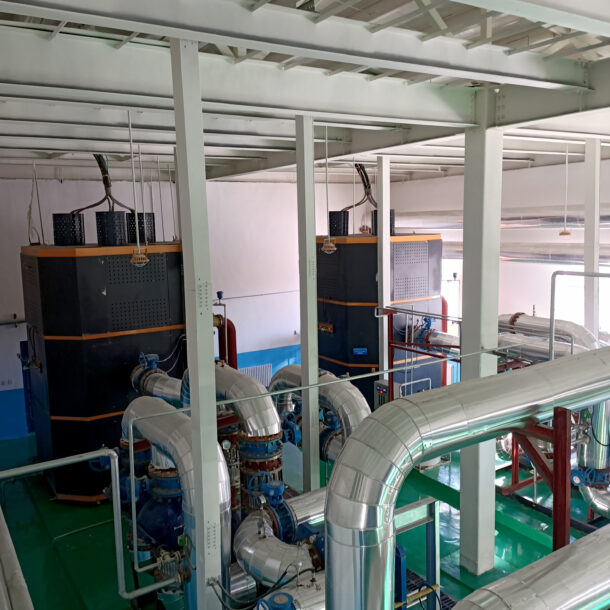
State-of-the-art electrode boilers are safer, more energy-efficient alternatives to gas burning units, and also have significant benefits in terms of reliability and maintenance.
As an example, in Acme’s CEJS High Voltage Electrode Steam Boiler, almost 100% of the electrical energy is converted into heat with no stack or heat transfer losses. The electrodes of the jet type electrode steam boiler are vertically mounted around the inside of the pressure vessel. This enables the unit to produce maximum amounts of steam in a minimum amount of floor space, with boiler capacity from 6MW to 52MW. Operating at existing distribution voltages, 4.16 to 25 KV with up to 99.9% efficiency, the boiler can produce up to 170,000 pounds of steam per hour. With pressure ratings from 105 psig to 500 psig, the boilers are designed to ASME Section 1, and are certified, registered pressure vessels at the location of the boiler.
“With the jet type electrode boilers, there are no combustion hazards because there are no flames, fumes, fuel lines or storage tanks, which minimizes the risk of explosions and fires,” says Presser. In case of an electrical short, the breaker that protects the high voltage circuit trips in a matter of milliseconds, protecting the boiler and the electrical network. There is no chance of electrical mishap or fire from the boiler.
Since the design does not rely on combustion, it does not create emissions that would endanger the operator or environment. In addition, the design eliminates many environmental issues associated with fuel burning boilers such as fuel fumes, fly ash, and large obtrusive exhaust stacks.
The approach resolves safety issues related to potentially excessive heat accumulation with the system as well. Low water protection is absolute since the absence of water prevents current from flowing and the electrode boiler from producing steam. Unlike conventional electric boilers or fossil fuel boilers, nothing in the electrode boiler is at a higher temperature than the water itself. This prevents the risk of dangerous heat build up in the boiler, electrodes, and other important components even if scaling should occur, and thermal shock is eliminated.
“Electric boilers, and specifically the electrode units, are inherently the safest boiler design today. These units do not need an operator because if anything goes wrong, the breaker trips, preventing further escalation of the issue,” explains Presser.
The electric boilers also improve safety by reducing industrial noise, which is an OSHA regulated issue. Under OSHA’s Noise Standard, the employer must lower noise exposure through engineering controls, administrative controls, or Hearing Protection Devices (HPDs) to attenuate the occupational noise received by the employee’s ears to within levels specified.
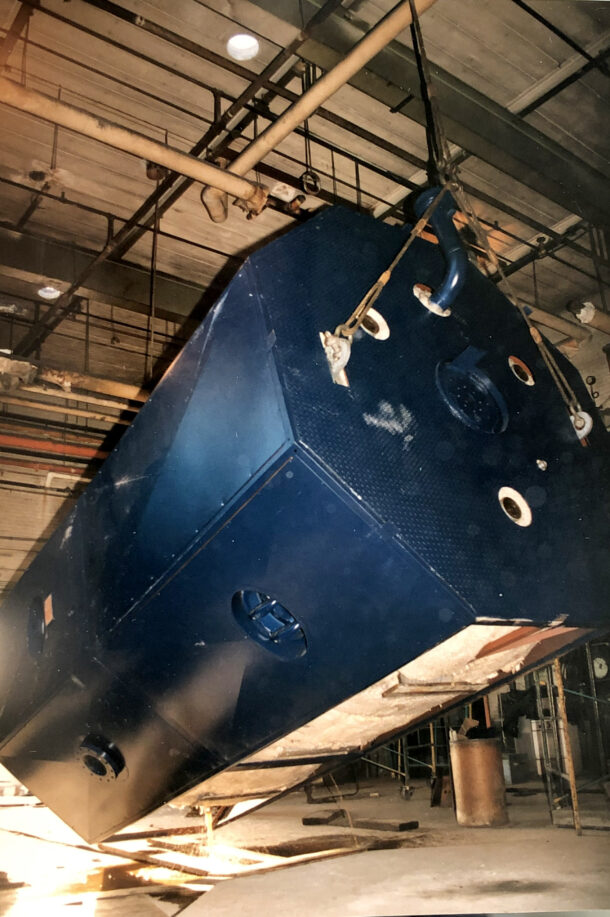
Advanced electrode boilers like those from Acme Engineering dramatically reduce the risk of explosion, fire, and noxious emissions associated with fossil fuel burning units.
In this regard, the electric units are also exceptionally quiet compared to fuel fired boilers. “Unlike gas-powered burners that throttle like turbine engines almost continually, electric boilers keep operational noise levels down,” says Presser. “Because the loudest boiler component is a circulating pump motor, you can have a conversation next to one without the need to elevate your voice.”
While safety of the electrode units is superior, there are also significant benefits in terms of reliability and maintenance. The absence of excessive temperatures and burnout assures longer operating life. The boilers have a minimum number of components and electrical controls. With no fuel residues, along with fewer parts and simple control systems, cleaning and maintenance requirements are reduced, and reliability is enhanced.
Processors have long sought to improve safety, yet options have been limited. Now, as safer, more energy-efficient alternatives become more widely available in the form of state-of-the-art electrode boilers, companies can protect their people and processes more completely while minimizing required maintenance.
For more info, contact Robert Presser at Acme Engineering at e-mail: rpresser@acmeprod.com, phone: 888 880-5323, or web: www.acmeprod.com/
Del Williams is a technical writer based in Torrance, California.
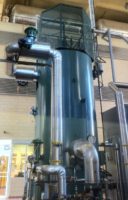
Advanced electric boilers offer output equal to fuel burning units with 100% energy efficiency, zero emissions, and minimal installation, operation, and maintenance costs In many areas of the U.S. and Europe, district heating remains popular for space and water heating of residential and commercial buildings. Although the source of the heat supplied can vary, one Read more
Advanced electric boilers offer output equal to fuel burning units with 100% energy efficiency, zero emissions, and minimal installation, operation, and maintenance costs
In many areas of the U.S. and Europe, district heating remains popular for space and water heating of residential and commercial buildings. Although the source of the heat supplied can vary, one common approach is to utilize fuel-burning boilers that produce steam. Unfortunately, conventional boilers present several challenges, including low efficiency when transforming fuel energy to heat; high installation, operating, and maintenance costs; environmental impact from harmful emissions; and some inherent safety issues.
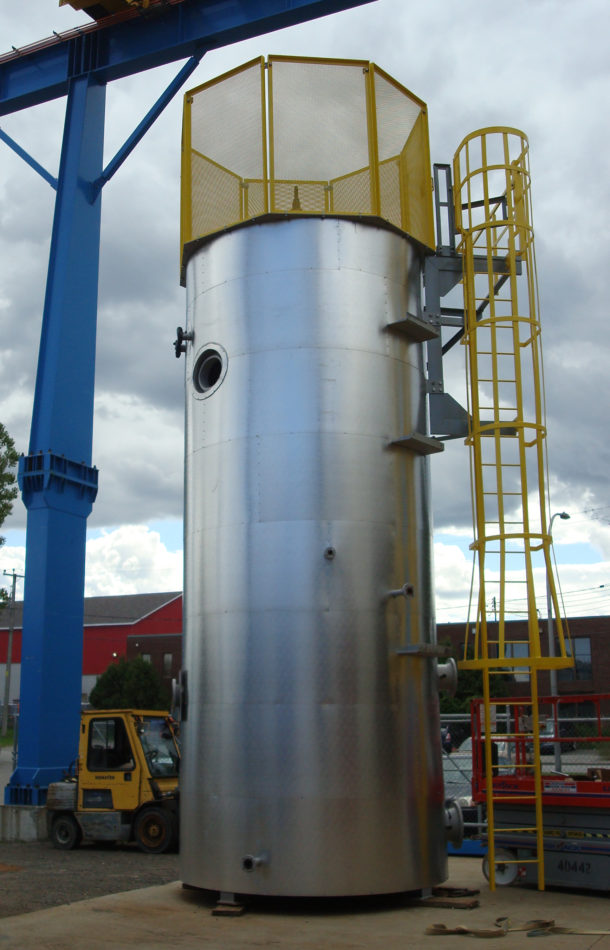 There is growing interest in utilizing a new generation of jet type electrode boilers as an environmentally friendly solution. Due to considerable advances in the technology, these electric boilers can match the capacity (up to 65 MW) and output (270,000 pounds of steam per hour) of traditional gas or oil-fired boilers. When more output is required, multiple electric boilers can be connected to provide hundreds of megawatts of steam for district heating, and effectively replace gas fired boilers in a much smaller overall footprint.
There is growing interest in utilizing a new generation of jet type electrode boilers as an environmentally friendly solution. Due to considerable advances in the technology, these electric boilers can match the capacity (up to 65 MW) and output (270,000 pounds of steam per hour) of traditional gas or oil-fired boilers. When more output is required, multiple electric boilers can be connected to provide hundreds of megawatts of steam for district heating, and effectively replace gas fired boilers in a much smaller overall footprint.
There are a growing number of compelling reasons for municipalities to utilize high voltage, jet type electrode boilers for district heating, according to Robert Presser, Vice President of Acme Engineering, a manufacturer of industrial and commercial boilers with operations in the U.S., Canada, and Europe.
“Jet type electrode boilers can match the heating output of fuel burning boilers while converting almost all the energy to heat,” says Presser. “Electrode boilers also resolve many of the inherent drawbacks of fossil fuel burning boilers: they are much smaller, put out zero emissions, and minimize installation and maintenance costs.”
Today, the spiking cost of gas and oil is often a factor when considering an upgrade of an existing district heating system. In some cases, the concern is minimizing environmental impact. Natural gas-fired boilers and furnaces emit dangerous nitrogen oxides (NOx), carbon monoxide (CO), nitrous oxide (N2O), volatile organic compounds (VOCs), sulfur dioxide (SO2), particulate matter (PM), and the notorious greenhouse gasses carbon dioxide (CO2) and methane (CH4).
Regardless of the motivation, upgrading entails retrofitting or replacing boilers (the heat source) with cleaner, more efficient electric alternatives, along with the heat distribution network (pipes/heat exchanger stations).
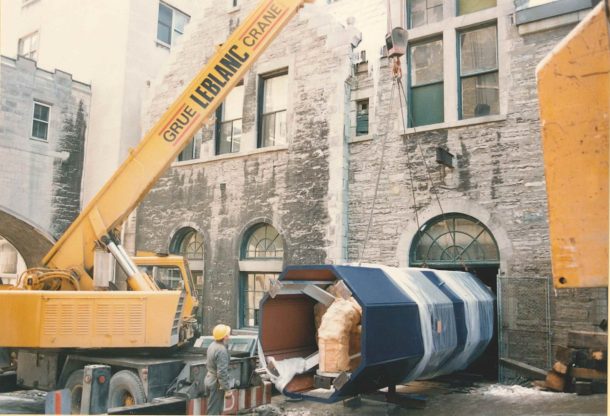
Designed for Optimal Performance
Jet type electrode boilers have existed in various forms for many decades. However, recent design improvements have closed the output gap while surpassing conventional units in terms of efficiency, simplicity, responsiveness, and safety.
Modern jet type electrode boilers utilize the conductive and resistive properties of water to carry electric current and generate steam. An A.C. current flows from an electrode of one phase, through neutral, to an electrode of another phase using the water as a conductor. Since the water has electrical resistance, the current flow generates heat directly in the water itself.
“The more current [amps] that flows, the more heat [BTUs] is generated and the more steam produced. Nearly 100% of the electrical energy is converted into heat with no exhaust stack or heat transfer losses,” says Presser.
As an example, in the CEJS High Voltage Jet Type Steam Boiler from Acme Engineering, the electrodes are vertically mounted around the inside of the pressure vessel, which enables the unit to produce maximum amounts of steam in a minimum amount of floor space. The units operate at existing distribution voltages, 4.16 to 25 KV with exceptional efficiency – up to 99.9% efficient at converting energy into heat. Models can produce steam in capacities up to 270,000 pounds per hour, with pressure ratings from 75 psig to 500 PSIG. All CEJS boilers are designed to ASME Section VIII Division1 and are certified, registered pressure vessels.
The advanced steam boilers also have a 100% turndown ratio, the ratio between a boiler’s maximum and minimum output. Most gas boilers have a 10:1 or 5:1 ratio.
“The turndown means you can leave the boiler in standby at low pressure and, when needed, bring it to full capacity in about 90 seconds, which no other boiler type can achieve today,” says Presser.
“With the electric boilers, the energy input and adjustment are very precise and virtually immediate. In contrast, increasing or decreasing the temperature in a gas fired boiler is a slower process because it takes time for the heat in the boiler to rise or dissipate before reaching the targeted output,” he adds.
Jet type electrode boilers also lower costs for installation, operation, and maintenance. Gas-fired boilers require fuel lines, storage and handling equipment, economizers, and emission control equipment. Advanced jet type electrode boilers have a minimal number of components and electrical controls, with fewer parts. Under normal operation, the absence of excessive temperatures and electrode burnout also assures long operating life.
The units further lower operating costs with automatic controls that reduce the need for operating personnel.
Presser points out that the most advanced types of these boilers, such as Acme’s CEJS, also offer greater safety than traditional fuel burning models.
“With the jet type electrode boilers, there are no combustion hazards because there are no flames, fumes, fuel lines or storage tanks. There are no problems with heat buildup or electrode burnout even if scaling should occur, and thermal shock is eliminated. Also, there is no low water danger since the current cannot flow without water,” says Presser.
Communities utilizing district heating appreciate the eco-friendly nature of these boilers as well. Without combustion, jet type electrode boilers are clean and emission free. The design also eliminates many environmental issues associated with fuel burning boilers such as fuel fumes, fly ash, and large obtrusive exhaust stacks.
Finally, the electric units are exceptionally quiet compared to fuel fired boilers. Unlike gas-powered burners that throttle like turbine engines almost continually, electric boilers keep operational noise levels down. Because the loudest boiler component is a circulating pump motor, it is easy to have a conversation next to one without having to raise your voice.
With all the advantages of high output jet type electrode boilers, a growing number of communities are selecting them for district heating.
Presser concludes, “We have spoken to utilities with massive boiler plants that are traditionally stuck feeding steam lines all over major city cores like New York City. In urban centers, they really want to get away from the associated emissions. A large utility has been talking to us about putting a 60 MW steam boiler in the center of Manhattan to replace gas-fired boilers, providing a centralized theme to several buildings.”
For more info, contact Robert Presser at Acme Engineering via e-mail: rpresser@acmeprod.com; phone: (888) 880-5323 or (514) 342-5656; or web: https://www.acmeprod.com/jet-type-steam-boiler
